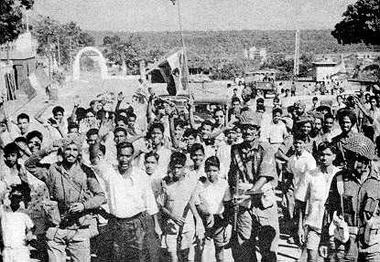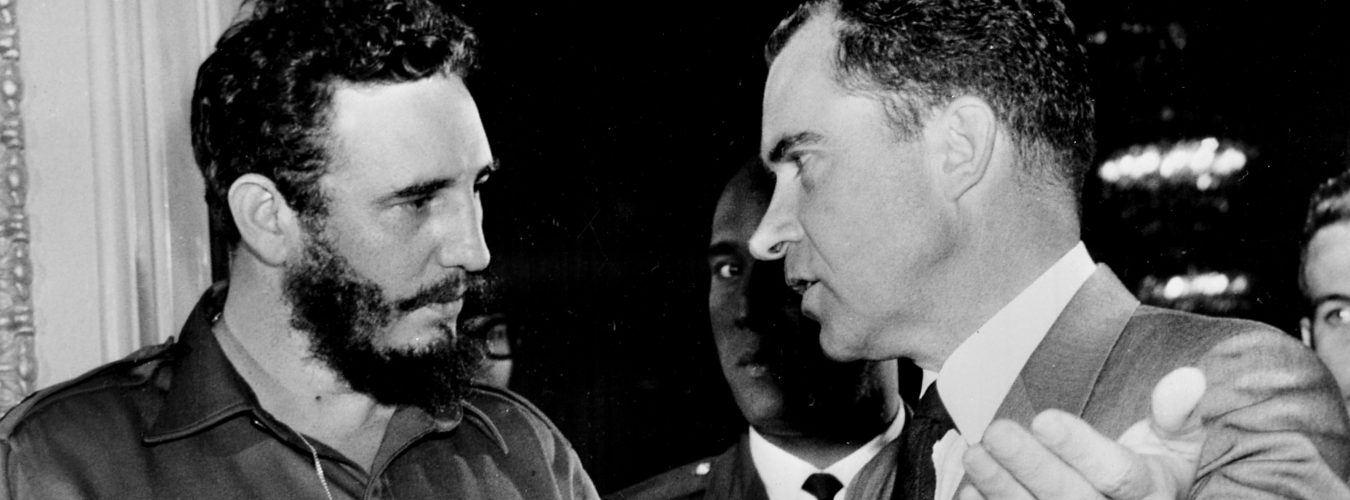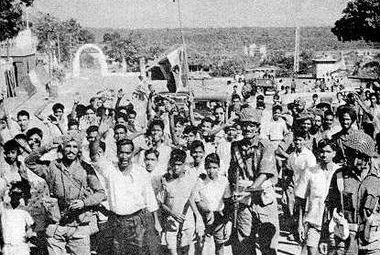On December 18, 1961, India invaded a region of the subcontinent, Goa, that had long been under the colonial rule of Portugal. The severely outnumbered Portuguese force retreated deeper into the territory as they awaited assistance from their Western allies: support that ultimately failed to sufficiently materialize. Ultimately, Portugal would surrender the territory to India, sending shock waves across the globe.

By 1961, India had only recently become an independent nation, securing its autonomy from the British Empire in 1947. Following independence, their first elected Prime Minister Jawaharlal Nehru began the process of industrializing the nation’s economy. As Prime Minister Nehru guided the new nation into the polarized Cold War environment, he spearheaded the non-aligned movement, a coalition of third world nations that declared neutrality and deflected allegiance to either the United States or Soviet Union. Given this stance of neutrality, India initially attracted little attention from the United States and Soviet Union. However, following Stalin’s death in 1953, the USSR pursued a renewed interest in relations with third world nations. In the coming years, the Soviet Union established diplomacy and significant aid programs with India, culminating in a symbolic tour of the subcontinent by Soviet Premier Nikita Khrushchev. The United States was alarmed by this Soviet presence, especially when viewed in conjunction with the “loss of China” to Communist influence in 1949. Prime Minister Nehru recognized this situation as an opportunity, as he knew that the United States would feel pressured to take action to contain Soviet influence in South Asia. Thus, remaining firm that India was non-aligned, he leveraged their position in the Cold War context to receive support from both nations. While the United States was suspicious and disapproved of India’s neutral stance, in 1956 Eisenhower’s administration also began to provide financial support to India. Nehru’s gamble was a success, and the United States and Soviet Union entered a period of co-existence in the subcontinent.
While Nehru’s non-aligned movement promoted neutrality in the Cold War, it also supported anti colonialism and the sovereignty of South Asian and African nations. This ideology led Nehru to support the self-determination of Goa, a Portuguese colonial possession in the Southwestern region of the subcontinent. Within Goa, there had been several grassroots efforts to join India, and India itself tried several failed attempts to secure Goa diplomatically. Frustrated by the lack of progress, in December 1961 Indian military forces engaged in storming the region, sparking a fierce Portuguese response. Given that the United States was competing with the Soviet Union for influence in India, this invasion posed a particular predicament: how would the United States respond to a major aid recipient attacking a territory of a member of the North Atlantic Treaty Organization (NATO)?
Ultimately, as the conflict turned to the United Nations for resolution, the United States opted to support its strategic Western European ally, arguing that India’s use of force violated the UN charter. The Soviet Union sided with India, as Moscow argued that this was an independence movement waged against imperialist capitalists. When a US-led group of nations drafted a proposal for a diplomatic end to the conflict, the Soviet delegate vetoed it. Portugal surrendered Goa to India the following evening. The United Nations squandered one of the first opportunities to demonstrate the strength and unity of the organization on a global stage, and many began to question the integrity of the organization itself.
US Newspapers, such as the New York Times, covered the conflict, and the reception among experts was fairly mixed. Several articles, including one written by the editors of the Times, blamed the conflict on India. In a blistering passage titled “India the Aggressor,” they charged that the invasion “has done irreparable damage to India’s good name and to the principles of international morality.” India, the paper argued, had violated several statutes of the UN charter and contributed further antagonisms to an unstable world. However, other articles in the Times defended the violence and claimed that India had exhausted all peaceful means for resolving the issue. For example, Arun Gandhi, an Indian-American socio-political activist, called out American hypocrisy as he drew parallels between the Bay of Pigs invasion and India’s invasion of Goa. Gandhi argued that the United States was unofficially enthusiastic to use violence to reclaim a territory that was once their possession, yet simultaneously disparaged India’s conflict with Goa. Given this contradiction, he asked the reader, “What, then, is the purpose of this mud-slinging? Is it just to prove to the world that India, a votary of nonviolence, too is not above the use of force?”
Ultimately, through these pieces regarding the Goan conflict, one can recognize that Americans’ views of US foreign policy began to divide in the 1960s, as citizens struggled to reconcile their faith in elected officials with elements of hypocrisy that the United States demonstrated in an intensifying Cold War.
Works Cited:
Bradley, Mark. “Decolonization, the Global South, and the Cold War, 1919–1962.” In The Cambridge History of the Cold War, volume 1, eds. Melvyn P. Leffler and Odd Arne Westad. Cambridge: Cambridge University Press, 2010: 464–85
Craig, Campbell and Logevall, Fredrik. America’s Cold War: The Politics of Insecurity, 2nd edition. Cambridge, MA: Harvard University Press, 2020.
Engerman, David. “South Asia and the Cold War.” In The Cold War in the Third World, ed. Robert McMahon. Oxford: Oxford University Press, 2013: 67-84.
Gandhi, Arun. “Action in Goa Defended: India Declared to have Exhausted Every Peaceful Approach.” New York Times, Dec 31, 1961: 8.
“India, the Aggressor.” New York Times, Dec 19, 1961: 32.
Wood, Joshua. “The Annexation of Goa.” Ruleoflaw.org. 2016.

